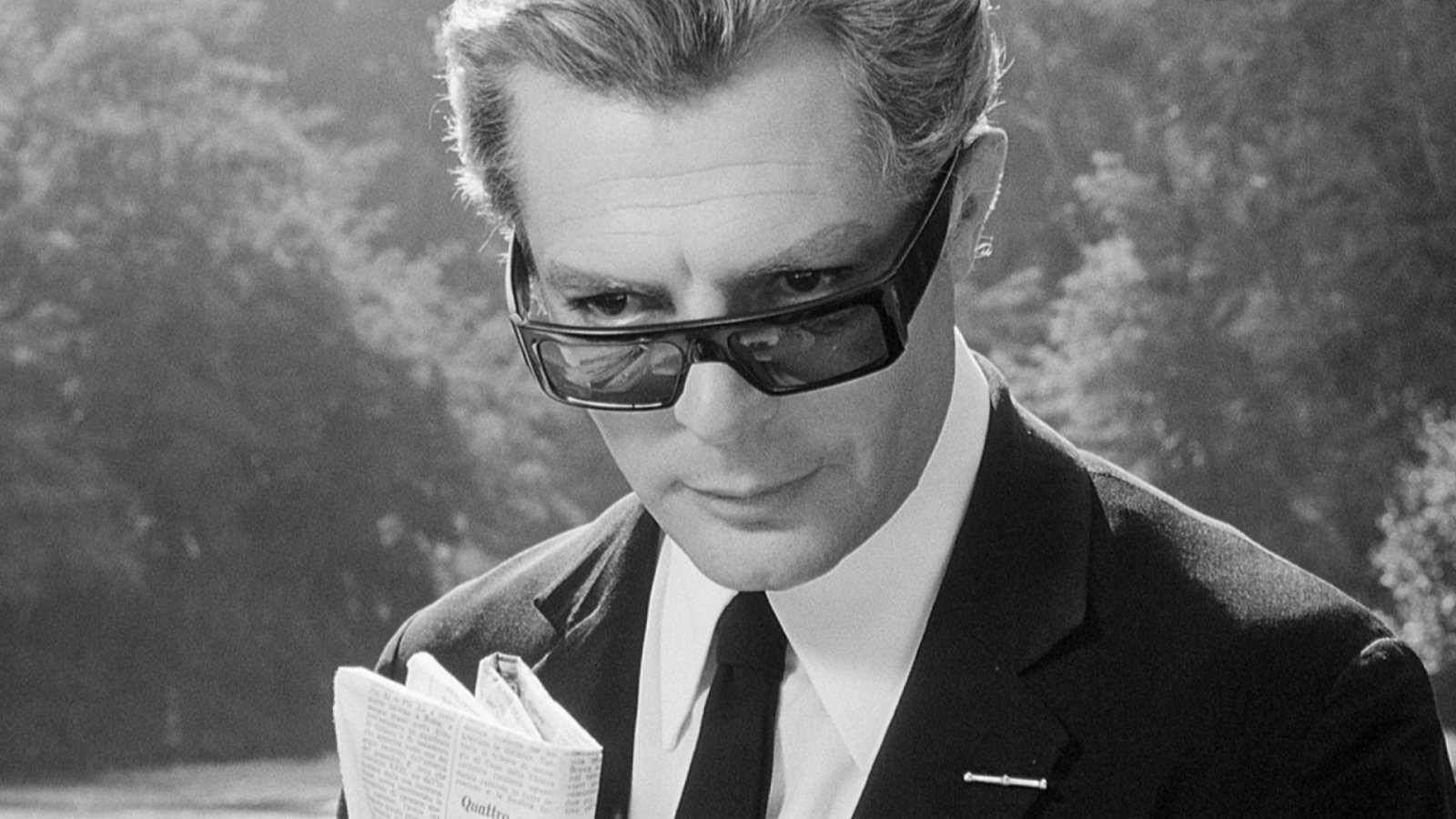18. 8 ½ (1963)

Federico Fellini’s 8 ½ is about a filmmaker who has run out of ideas. In many ways, it might be autobiographical, but this is a film bursting with creativity and life, and Fellini does not seem in any way restrained or at a lack for what to say here. This is another film that simply could not have been made in color. The way the film bounces between the past and present, fiction and reality, works because black and white has always felt more cinematic than color.
Our world is not in black and white, so when we see a black and white film, at a very subconscious level we understand that we are not dealing with reality here. Gianni Di Venanzo’s cinematography is absolutely stunning. Martin Scorsese once said that the two films that told him everything he needed to know about filmmaking were Fellini’s 8 ½ and Michael Powell’s Peeping Tom.
19. Who’s Afraid of Virginia Woolf? (1966)
On April 10th, 1967, the very last Academy Award for Best Cinematography in a Black and White Film was presented. Before that night, for years the Academy had awarded two separate cinematography awards, one for black and white films, the other for films in color. Perhaps it’s fitting that Haskell Wexler won the last Oscar for Best Cinematography in a Black and White Film for his work on Who’s Afraid of Virginia Woolf.
The film, then, in a way represented the divide between the old Hollywood and the new. 1967, which many view as the dawning of modern cinema, was the year the studios actively began distancing themselves from the way of films of the past, and that included moving more towards color and away from black and white. Who’s Afraid of Virginia Woolf, however, remains a landmark work of cinema.
20. Young Frankenstein (1974)
The smartest move Mel Brooks made while filming Young Frankenstein, and there were many, was shooting the picture in black and white. The film is, above all else, a loving homage to the Universal Studios monster films of the thirties and forties, and the film would have felt inauthentic in color (Brooks even used sets and props from some of these films, to add to the authenticity).
It’s important that the film looks and feels like another Universal film of the forties, and then the subversive humor can work its magic on the audience. The cinematography in comedies usually isn’t mentioned, which is a shame, since Gerald Hirschfeld’s work here is so terrific. Even those who hate black and white films cannot deny the sheer hilarity of Young Frankenstein.
21. Eraserhead (1977)
Like all great nightmares, David Lynch’s feature film debut, Eraserhead, has an unflinching, relentless power. Its images are revolting and beautiful, shocking and humane. Lynch creates a world of industrial buildings and subterranean lairs, a world of strange and horrible creatures.
Of course, deep down, the film is about the panic of parenthood, but Lynch lets the terrifying and haunting black and white cinematography by Herbert Cardwell and Frederick Elmes speak for itself. Eraserhead remains a one of a kind film experience.
22. Killer of Sheep (1978)
Charles Burnett’s Killer of Sheep, which was made while he was still a student at UCLA, is one of the great landmarks of African-American cinema. It is a devastating and poignant look at an exhausted slaughterhouse worker, his wife and their children.
Killer of Sheep is at once a realistic slice-of-life and a dream-like experience of unbelievable power. Made for five thousand dollars, the film’s use of black and white may very well be a budgetary necessity, but this film could not have been made in color. The way the film walks that tightrope between fantasy and reality would be all wrong in a color film.
23. Ed Wood (1994)
Much like how Mel Brooks chose to film Young Frankenstein in black and white to honor the Universal Studios monster films, Tim Burton chose to shoot his biopic of Ed Wood in black and white in order to pay homage to the director affectionately known as “the worst director of all time.”
Again, the black and white in this film gives the movie an added dimension in authenticity. Burton’s film is a loving, glowing tribute to trash cinema, and Stefan Czapsky’s black and white cinematography is icing on the cake.
24. Ida (2013)
The 2015 Academy Award winner for Best Foreign Film also featured Oscar-nominated cinematography by Lukas Zal and Ryszard Lenczewski. Pawel Pawlikowski’s Ida features some of the most astonishing compositions in any film, color or black and white, in the last several years.
The film, which takes place in Poland during the turbulent 1960s, is really about how the past won’t let go of us, so it’s fitting that the film is in black and white. Ida is an absolute must-see.
25. Nebraska (2013)
There’s a timeless feel to Alexander Payne’s brilliant road movie about the generation gap between father and son. Part of this ageless quality is thanks to the black and white cinematography by Phedon Papamichael.
In an age where fewer and fewer films are filmed in black and white, it’s a treat for film fans to see contemporary black and white films in movie theaters. Hopefully, a black and white renaissance is around the corner, and black and white films will be taken seriously as an art form again.
Author Bio: Adam Gray is a teacher, film critic and writer. He writes about film at his blog: https://topshelfmovies.wordpress.com/.






